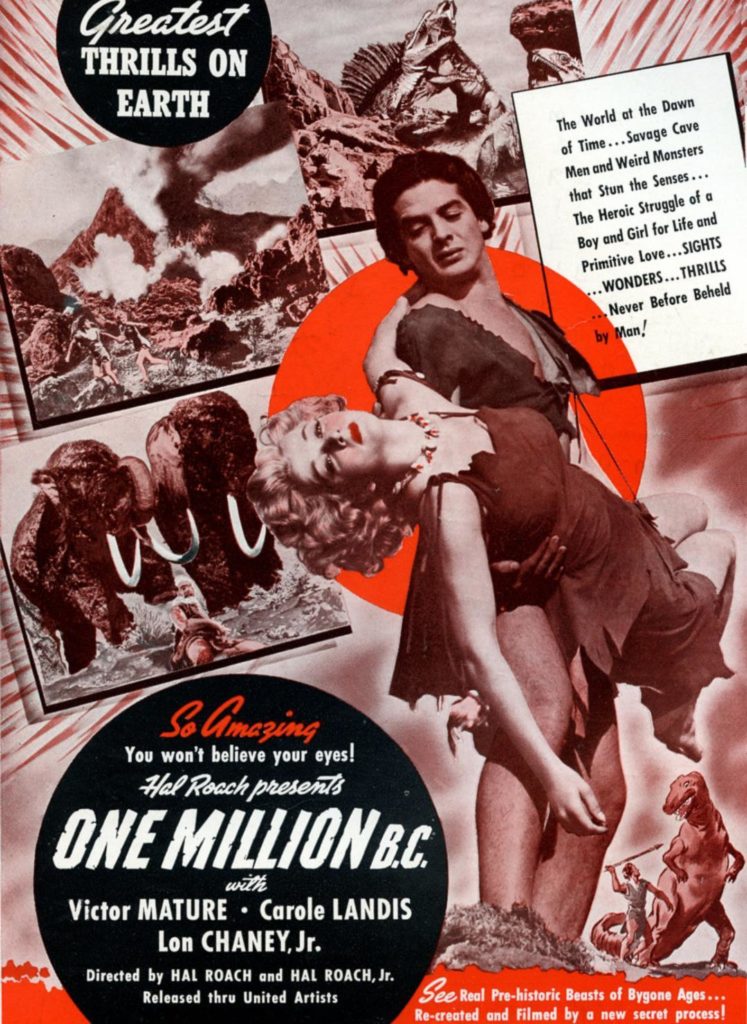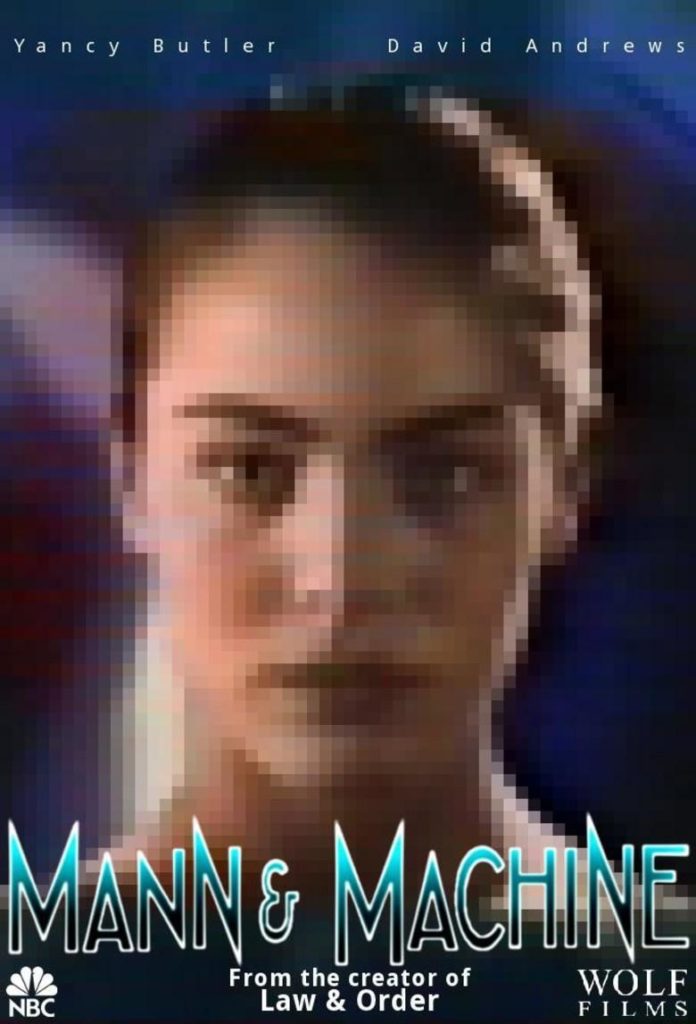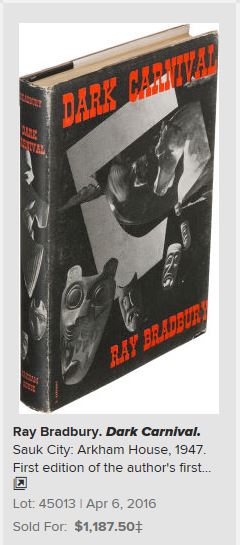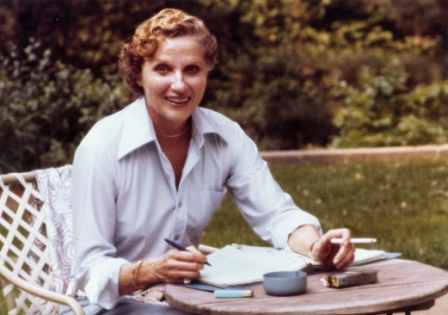(1) HISTORY-MAKING NOVELETTES. At the SF Award Database, Mark Kelly has released his list of the Top 100 Novelettes in sff history, with the first 20 annotated: “Top SF/F/H Novelettes”.
On top: “Nightfall” by Isaac Asimov (1941). Here’s the link to his “Short Fiction Ranking Introduction and Methodology”.
Kelly posted the “Top SF/F/H Short Stories” a few months ago. “Bears Discover Fire” by Terry Bisson headed that list. Pages for other categories are in process.
(2) YOUR NEW FAVORITE PROF. N.K. Jemisin has joined the ranks of Master Class instructors.
(3) ESSENCE OF WONDER. Essence of Wonder with Gadi Evron is hosting a two-part panels on “Exploring Chinese Science Fiction Multi-dimensionally: Fiction, Translation, Fandom, Industry, and More” on Saturday, April 24 at 3 p.m. Eastern. Register at the link.
Join us for two panels on Chinese science fiction explored from multiple outlooks, from the fiction itself, through the translation and the fans, and all the way to the industry. The show is co-hosted by Regina Kanyu Wang and Yen Ooi, with our panelists: Chen Qiufan, Fend Chang, Emily Xueni Jin, Christine Ni, Angus Stewart, and Guangzhao Lyu. More details below.
There will be a segment on Asia and another on Europe.
(4) KICKS IN SIXTY-SIX. [Item by Martin Morse Wooster.] Isaac Asimov, in his autobiography In Joy Still Felt, discusses how he was master of ceremonies at the 1966 Worldcon. He was also nominated for a special Hugo for “Best All-Time Novel Series,” where he competed against The Lord Of The Rings and series by Edgar Rice Burroughs, Robert A. Heinlein, and E.E. Smith. Hugos then were given at a banquet.
I felt Tolkien was certain to win, and fairly so, and that Heinlein, Smith, and Burroughs all had enough devotees among the young fans attending the convention (and who did the voting) to give each a good shot at second place. Foundation, I felt, would finish in last place, and I grieved at being the sacrificial lamb. I was reconciled at losing, but hoped against hope that Burroughs or Smith would place fifth. I would be delighted to place fourth.
When it came to hand out that award, however, the organizer of the convention hastily whispered to me that Harlan (Ellison) wanted to handle the novel item and said, in a shamefaced manner, ‘We had better let him. You know Harlan.’
I certainly knew that Harlan was capable of making a giant-size fuss if he didn’t have his way, and I didn’t want him spoiling the banquet, so with what grace I could muster I gave way.
Harlan came dancing up, made a few rapid remarks that had everyone laughing, and then announced the nominees and omitted the Foundation series.
I called out from my seat, in real outrage, ‘Hey, Harlan, at least mention the Foundation series.’
Harlan didn’t hear me, or at least he made no sign that he had. He reached for the envelope, tore it open, waited the inevitable heartbeat for the sake of suspense, and said, ‘And the winner: Isaac Asimov for the Foundation series.’
I thought it was Harlan’s idea of a joke and sat there without moving and rather annoyed until everyone started laughing, and I gather I really won. And there were Gertrude and the children beaming, and everyone still laughing and applauding, and I got up to accept my Hugo, thoroughly and utterly speechless.
I don’t think the organizers of the convention thought anyone would take the award away from Tolkien, and it was the first indication I had, the first really convincing indication, since the first of the Foundation series appeared twenty-four years before, that the series was so popular. In fact, I realized that just as ‘Nightfall’ was the most highly regarded piece among the shorter lengths, The Foundation Trilogy was the most highly-regarded science-fiction item among the longer lengths.
(5) BOMBS, BOOKS, AND BOWIE. [Item by rcade.] The chemical/biological/radiological/nukes/explosives expert and electronic musician Andy Oppenheimer is tacking on a new job title — science fiction author.
Oppenheimer, who has written the indie novels Fields of Orion: An Odyssey and Fields of Orion: The Mission, describes the books and upcoming sequels in a guest post on the SFF book database Risingshadow. “Guest post by Andy Oppenheimer”.
In the two decades before I started writing science fiction, I wrote and lectured about defence, weapons of mass destruction (nuclear, bio, chemical), and counter-terrorism. Before that, I worked in publishing – starting with a job at an American futuristic science magazine, Omni, which also published science fiction. I went to the big conventions in the USA and here in Britain, and met many famous authors.
I wonder if I should have started writing sci-fi back then. But during my time at Omni I was more involved in the London nightclub scene as a DJ and part-time synth-pop singer.
He calls David Bowie, who he used to cosplay at nightclubs and science fiction cons, a major influence on both his music and fiction. Oppenheimer told Altvenger Magazine how he was hired by Omni in 1978: “Thin White Nuke by Andy Oppenheimer”.
When I ask my boss why I got the job over others with science degrees, he says: “You looked and acted the part for a futuristic magazine – and the others were boring.”
He later became a specialist on nuclear, biological and chemical weapons for the publication Jane’s Terrorism and Security Monitor. There’s no word on whether he looked the part.
(6) NO TRICKLE-DOWN. “Winter Soldier Creator Ed Brubaker on Lack of MCU Profits” at The Mary Sue.
The global success of the Marvel Cinematic Universe has earned Marvel and Disney billions of dollars over the past decade. But does any of that money trickle down to the writers and artists who created these beloved characters and stories? Not much, according to writer Ed Brubaker. Brubaker discussed his relationship with the MCU during an appearance on Kevin Smith and Marc Bernardin’s Fatman Beyond podcast, where he delved into his history with Marvel.
Brubaker, along with artist Steve Epting, resurrected the character of Bucky Barnes and transformed him into the Winter Soldier in 2004. What followed was a highly successful comics run that garnered Brubaker multiple Eisner awards and nominations for Captain America….
Brubaker highlighted the salary discrepancy for comics creators and artists by noting that he earned more money for his cameo performance in The Winter Soldier than for his creation of the character itself. “It’s ridiculous that like being a co-creator of The Winter Soldier … I should not have to be worried about providing for my wife if I die. Like right now, I don’t live a high life … I do well … it started to feel like this kind of hurts a little bit. To be overlooked this way. I know that they’ve made deals with other people that have had less input on what they do. And I just kind of felt like, it just sucks,” Brubaker told Smith and Bernardin….
(7) YOU’LL WANT TO SHELL OUT. Let Kotaku encourage you to “Drink Up This Ghost In The Shell Japanese Booze”.
Joining the likes of other geeky sake comes a line of Ghost in the Shell-themed stuff. Kanpai!
Previously, there has been Pac-Man, Yakzua, and Final Fantasy branded sake. Now, three bottles, each with characters from Ghost in the Shell, will be released in Japan.
According to Kurand (via Grape and PR Times), there is a light and dry-tasting Motoko Kusanagi branded release from Arinokawa Sake Brewery….

(8) FLETCHER OBIT. Costume designer Robert Fletcher, who worked on the original four Star Trek films, died April 5 at age 98. The Wrap has details: “Robert Fletcher, ‘Star Trek’ Film Costume Designer, Dies at 98”.
…Robert “Bob” Fletcher worked as a costume designer for over six decades, crafting the iconic look of the Klingons and the Vulcans in the original “Star Trek” movies, starting with “Star Trek: The Motion Picture” in 1979. His last feature film was “Star Trek IV: The Voyage Home” in 1986, and he’s credited with imagining the “monster maroon” Starfleet uniforms worn by William Shatner and company….
(9) MEDIA BIRTHDAY.
- April 18, 1938 –Superman first appeared in Action Comics #1, a comic book published on April 18, 1938 by National Allied Publications even though the cover said June. The character was created by writer Jerry Siegel and artist Joe Shuster. This was actually an anthology, and contained eleven features with the Superman feature being the first thirteen inside pages. Five years ago, a pristine copy of this comic sold for a record $3,207,852 on an eBay auction. It was one of two hundred thousand that were printed.
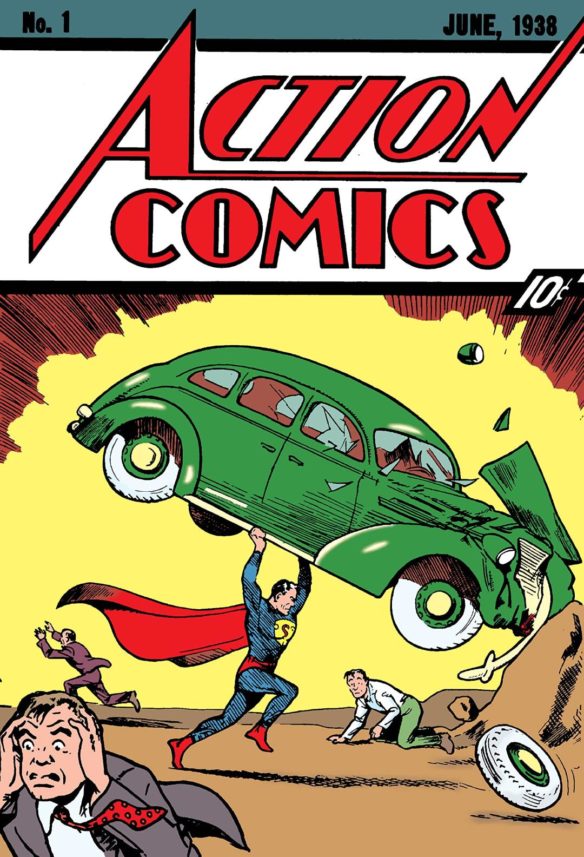
(10) TODAY’S BIRTHDAYS.
[Compiled by Cat Eldridge and John Hertz.]
- Born April 18, 1884 – Frank Paul. After FP had been contributing to Gernsback’s Electrical Experimenter awhile, G recruited him to help start Amazing; FP did every cover 1926-1929. Then Air Wonder, Science Wonder; Scientific Detective; Wonder; Fantastic, Science Fiction; eventually Amazing again. Here is Ralph 124C41+. Here is the Aug 27 Amazing. Here is the Clevention Program Book (13th Worldcon). Here is the Dec 57 Satellite. Two hundred twenty covers, fourteen hundred forty interiors. Guest of Honor at the first Worldcon. Two posthumous artbooks. (Died 1963) [JH]
- Born April 18, 1907 – Gertrude Carr. Charter member of the Nameless Ones. Correspondent of Trumpet, Vega, and like that; member of various apas e.g. FAPA, SAPS, N’APA. Active in Star Trek fandom during its first decades. See here. (Died 2005) [JH]
- Born April 18, 1952 – Martin Hoare. Physicist and beer connoisseur. Co-chaired Eastercon 35 and 53, a suitable numerical coincidence. Doc Weir Award (service). Regularly attended U.S. Worldcons during the long run of Dave Langford’s Best-Fanwriter Hugos, gleefully announced telephoning with the news at 3 a.m. DL’s time. (Died 2019) [JH]
- Born April 18, 1946 – Janet Kagan. “The Nutcracker Coup” was nominated for both the Hugo Award for Best Novelette and the Nebula Award for Best Novelette, winning the Hugo at ConFrancisco. She has but two novels, one being Uhura’s Song, a Trek novel, and quite a bit short fiction which is out in The Complete Kagan from Bean Books and is available from the usual digital suspects. (Died 2008.) (CE)
- Born April 18, 1965 – Stephen Player, 56. Some birthday honor folks are elusive. He came up via one of the sites JJ gave me but little is on him on the web. What I did find is awesome as he’s deep in the Pratchett’s Discworld and the fandom that sprung up around it. He illustrated the first two Discworld Maps, and quite a number of the books including the 25th Anniversary Edition of The Light Fantastic and The Illustrated Wee Free Men. Oh, but that’s just a mere wee taste of he’s done as he did the production design for the Sky One production of Hogfather and The Colour of Magic. He did box art and card illustrations for Guards! Guards! A Discworld Boardgame. Finally he contributed to some Discworld Calendars, games books, money for the Discworld convention. I want that money. (CE)
- Born April 18, 1965 – Stephen Player, age 56. Thirty covers, a dozen interiors. Here is an Oxford ed’n of Do Androids Dream of Electric Sheep? Associated with Terry Pratchett; here is The Discworld Mapp; here is The Illustrated “Wee Free Men”. Website. [JH]
- Born April 18, 1969 – Keith R. A. DeCandido, 52. I found him with working in these genre media franchises: such as Supernatural, Andromeda, Farscape, Firefly, Aliens, Star Trek In its various permutations, Buffy the Vampire Slayer, Doctor Who, Spider-Man, X-Men, Hercules, Thor, Sleepy Hollow,and Stargate SG-1. (He has also written works that were not media tie-ins.) (CE)
- Born April 18, 1971 – David Tennant, 50. Eleventh Doctor and my favorite of the modern Doctors along with Thirteen whom I’m also very fond of. There are some episodes such as the “The Unicorn and The Wasp” that I’ve watched repeatedly. He’s also done other spectacular genre work such as the downright creepy Kilgrave in Jessica Jones, and and Barty Crouch, Jr. in Harry Potter and the Goblet of Fire. He’s also in the Beeb’s remake of the The Quatermass Experiment as Dr. Gordon Briscoe. (CE)
- Born April 18, 1973 – Cora Buhlert, 48. With Jessica Rydill, she edits the Speculative Fiction Showcase, a most excellent site. She has a generous handful of short fiction professionally published, and she’s was a finalist again for the Best Fan Writer Hugo this year. I’ve got her Paris Green: A Helen Shepherd Mystery in my reading list. (CE)
- Born April 18, 1994 – Alexandra Adornetto, age 27. Eight novels. Her first was published when she was 13; “The shadow represents individuality and colour and a person’s spirit, really.” Won a State public-speaking competition. Commuted between Australia and Ole Miss. Besides writing, likes “old-style country music, theology, singing.” [JH]
- Born April 18 – Cheryl Morgan. Her Emerald City won a Best-Fanzine Hugo (I contributed to it); CM later won Best Fanwriter, joined in earning two Best-Semiprozine Hugos while at Clarkesworld, now edits Salon Futura,owns Wizard’s Tower Press. Guest of Honor at Eurocon 34. I’d call her an idiosyncratic critic but around here that wouldn’t indicate she was unusual. [JH]
(11) COMICS SECTION.
- Get Fuzzy has a lot of funny-horrible puns mashing up Star Wars and Canada.
- Bizarro does justice to superhero cuisine.
(12) BAUM’S AWAY.PBS’ American Experience series premieres American Oz: The True Wizard Behind The Curtain on April 19.
Explore the life and times of author L. Frank Baum, the creator of one of the most beloved, enduring and classic American narratives. By 1900, when The Wonderful Wizard of Oz was published, Baum was 44 years old and had spent much of his life in restless pursuit of success. With mixed results he dove into a string of jobs — chicken breeder, actor, marketer of petroleum products, shopkeeper, newspaperman and traveling salesman — Baum continued to reinvent himself, reflecting a uniquely American brand of confidence, imagination and innovation. During his travels to the Great Plains and on to Chicago during the American frontier’s final days, he witnessed a nation coming to terms with the economic uncertainty of the Gilded Age. But he never lost his childlike sense of wonder and eventually crafted his observations into a magical tale of survival, adventure and self-discovery, reinterpreted through the generations in films, books and musicals.
(13) THE EARTH IS FLAT, HOW BOW DAT. [Item by rcade.] If you’re looking for the kind of definitive proof that only a random Internet search can provide, Getty Images has a series titled “Flat Earth from Space.” Here’s a lovely shot of the Antarctica-ringed planet we call home perched on its stabilizing stalactite: “Flat Earth From Space Stock Photo”
The images are by iStock contributor Cokada from Rio de Janeiro, Brazil, who has a portfolio of more than 8,800 images that include a lot of science fictional elements. “Cokada Stock Image and Video Portfolio”.
(14) IN SPACE, NO ONE CAN COMPLAIN TO OSHA. The Guardian is inspired by Stowaway to survey the field: “Sitting in a tin can: why sci-fi films are finally telling astronaut life like it is”
Anybody who fancies watching a new science fiction film this month can count their lucky stars. A Netflix drama, Stowaway, features Anna Kendrick, Toni Collette and Daniel Dae Kim as a trio of astronauts who are on their way to Mars when they discover that an unfortunate launch-plan engineer, Shamier Anderson, is still onboard. The trouble is, there is only enough oxygen for three of them. American viewers can also see Voyagers (due for release in Britain in July), in which 30 hormonal starship passengers are preparing to colonise another world. The trouble is, something goes wrong on their mission, too, and the trip turns into an interplanetary Lord of the Flies. The moral of both stories is that you should probably push “astronaut” a few slots down your list of dream jobs. But if you’ve caught any other science fiction films recently, it’s bound to be quite far down the list, anyway.
Again and again over the past decade, cinema has warned us that venturing beyond the Earth’s atmosphere is uncomfortable, dangerous, exhaustingly difficult, frequently tedious, and almost certain to involve interplanetary angst and asphyxiation….
(15) FRANKENSTEIN’S DROID. This happened at an auction in 2017, but it’s news to me. An “R2-D2 unit from ‘Star Wars’ sells for $2.75 million” reported CNN, the prop assembled from genuine bits and pieces.
A complete R2-D2 unit sold for $2.75 million Wednesday at a California auction, according to the Los Angeles-area auction house Profiles in History.
Luke Skywalker’s 43-inch tall sidekick was assembled from components from the original “Star Wars” trilogy as well as “Star Wars: Episode I – The Phantom Menace” and “Star Wars: Episode II: Attack of the Clones,” according to the auction catalog. The films were made between 1977 and 2002.
Unfortunately, this R2-D2 won’t interact with you. “No internal mechanics or workings are present,” the auction house said.
The droid is constructed of aluminum, steel and fiberglass, and is believed to be the only complete R2-D2 unit in the public domain, according to Profiles in History’s auction catalog. The auction house called it “one of the most instantly recognizable pieces of pop culture in existence.”
The dome in the droid dates to the original 1977 film when it was used by actor Kenny Baker.
The auction catalog said R2-D2 units were upgraded as more films were made, with older components being retired….
(16) TRAILER TIME. The WB dropped a trailer for the animated Batman: The Long Halloween, Part One.
(17) VIDEO OF THE DAY. “Star Trek: First Contact 25th Anniversary/First Contact Day” on YouTube is a panel sponsored by Paramount Plus for the 25th anniversary of Star Trek: First Contact that was moderated by Wil Wheaton and included Sir Patrick Stewart, Brent Spiner, Alice Krige, and Jonathan Frakes, who starred in the film and directed it, Topics included Krige’s preparation for her work as the Borg Queen, how Spiner felt his work as Data changed with the introduction of the emotion chip, and why Frakes as a director became known as “Two-Takes Frakes,”
[Thanks to Hampus Eckerman, JJ, Mike Kennedy, Martin Morse Wooster, John Hertz, Andrew Porter, John King Tarpinian, Bonnie McDaniel, Michael Toman, and Cat Eldridge for some of these stories. Title credit goes to File 770 contributing editor of the day Soon Lee.]

